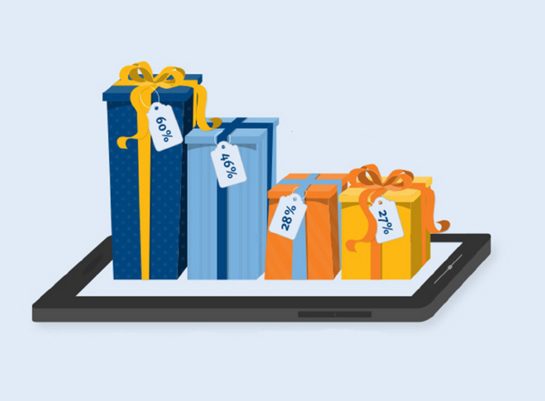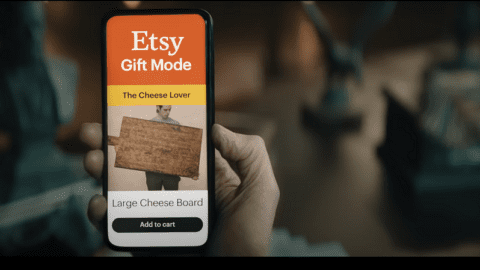Although Black Friday weekend has traditionally been a key focus of the retail industry for decades, the proliferation of e-Commerce and mobile is enabling consumers to go about their holiday spending more freely, focusing less on when they make a purchase and more on how they do it. To deal with this change in shopper behavior, retailers now have to adjust their promotional and logistical schedules throughout the holiday season.
Because consumers have more real-time access to product information, they have taken control of the shopping journey and are less inclined to shop during the trademark holiday shopping days. Instead, they’re holding out for what they consider to be the best deals later in the month. It isn’t just a slight delay in shopping habits, either. Maybe consumers actually are getting a psychological rush out of shopping at the latest times possible before gift giving begins.
Numerous statistics have suggested that these consumers are taking as long as they can on their own volition to spend on gifts:
Advertisement
-
40% of the holiday season’s sales will happen in the 10 days before Christmas in 2015,, according to the National Retail Federation (NRF);
-
90% of holiday shoppers had not finished their holiday shopping as of Dec. 15, according to the NRF;
-
30% of shoppers indicated that they were set to wait until the week of Christmas to do the majority of their holiday shopping, according to RetailMeNot in a report released on Dec. 11; and
-
17% of American consumers hadn’t begun holiday shopping as of Dec. 14, according to a Reuters/Ipsos poll.
So how should retailers respond? Kohl’s, for one, is embracing the last-minute shopping trend by staying open for 170 hours straight, from 7 am on Dec. 17 until 6 pm on Christmas Eve. Is the retailer really expecting many consumers to wait until 2 am to shop? Probably not, but it does show that the retailer understands that “last minute” shopping needs can be unpredictable for the consumer.
Aside from the Kohl’s example, it is noticeable that retailers are now spreading their discounts beyond the typical early-season promotional shopping days. While Best Buy sold an Apple Watch Sport for $50 off its regular price of $399 on Black Friday, the retailer is now selling it at a $100 discount.
“Consumers have become conditioned to expect discounts and promotions,” said Jack Kleinhenz, Chief Economist of the NRF, in a blog post. “As the TV commercial says, ‘nobody pays retail anymore.’ All of this has combined to create a very deflationary atmosphere the past year or more, meaning retailers have needed to be competitive and drop prices to keep products moving off the shelves.”
Super Saturday Emerges As A Top Spending Day
As the latter part of the holiday season proves more popular with shoppers, it looks like consumers will be focusing on one prime December shopping day: Dec. 19, otherwise known as Super Saturday. That one day has become so popular that 92% of consumers who are still looking to shop this late in the season said they would go to a store over the weekend, according to ICSC research, even though they know they’ll be fighting traffic, parking lot issues and long in-store queues.
In monitoring the weekend’s activities, research analysts at investment banking company Nomura Securities even went so far as to say that in-store traffic appeared to be heavier on Super Saturday than it was on Black Friday.
While Black Friday remained the highest projected day for in-store sales and visits in 2015, according to ShopperTrak, Super Saturday ranked as the second highest day for both categories, illustrating the closeness in relevance between the two days. Additionally, the company even projected that the day after Christmas (Dec. 26) would have the third greatest number of in-store shopper visits.
It is yet to be determined which of the two days, Black Friday and Super Saturday, officially gathered more traffic and sales, but the predictions are yet another indicator of the increased influence Super Saturday is having on holiday sales.
Is Mobile The Reason For More Last-Minute Shopping?
One of the major contributing factors to the continued procrastination of consumers is the mobile device. With seemingly every consumer now having the opportunity to search brands and products in real time wherever they are, there is an assurance that they can find exactly what they’re looking for, even later in the season.
Branding Brand confirmed this trend in a recent study. Online visits with the retailers’ “Store Locator” search on smartphones increased 120% on Dec. 18, Dec. 19, and Dec. 20, when compared to the average December day prior.
Additionally, on Super Saturday, mobile traffic attributed to e-Commerce shopping activity jumped to 19% above average daily traffic, posting the second highest number of the season, trailing only the Sunday after Black Friday, according to Verizon Enterprise Solutions. Peak traffic volume got a big boost, posting a 15% increase above average on Super Saturday, indicating retailers are reaching consumers through mobile apps on their smartphones and tablets.
“As expected, there was a surge in both online and mobile commerce on Super Saturday as consumers rushed to wrap up their shopping,” said Michele Dupré, Group VP of Retail, Hospitality and Distribution for Verizon Enterprise Solutions. “This effective one-two punch combined with heavy in-store traffic means it was a solid day for retailers, though all indications are that there is still shopping to be done and wallet share to be gained in these final days before Christmas.”
Branding Brand also indicated that the later part of the December has a greater effect on shoppers actually completing their purchases. While total retail site visits across all devices from Dec. 13 through Dec. 19 were lower than they were from Dec. 6 to Dec. 12, revenue per visit actually increased heavily across these devices:
-
Smartphone (16%);
-
Tablet (8%); and
-
Desktop (7%).
With a further increase in mobile purchasing, it is clear that consumers are less afraid to spend late using their phones and tablets, even in the face of potential shipping concerns. As the season closes out over the next week, retailers must continue to optimize these mobile channels through both their site and app experiences, and create discounts to incite the last major shopping push before 2016.









